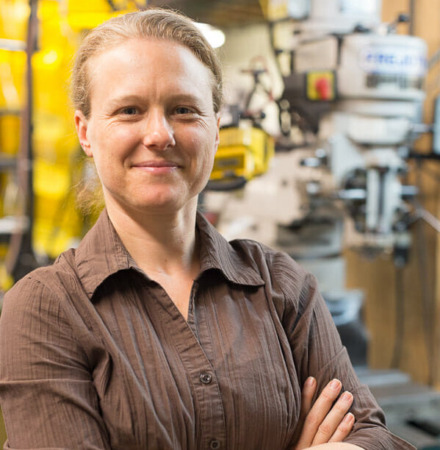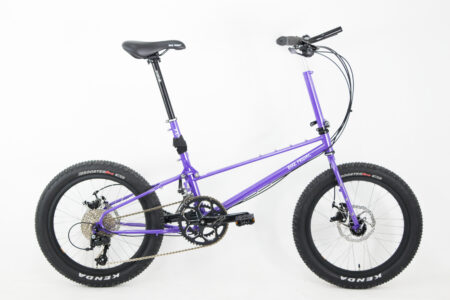You can run around Interbike for hours. Days, actually.
But getting a sense of what it all means it somewhat of a challenge.
Each element of the bike industry has its own take, and its own interests.
So, finding out what’s on the horizon — where we are headed — is easiest to find out from the journalists. In a nutshell, it’s their job to know.
As a former magazine man myself, hooking up with a couple of editors placed high on my agenda.
Since I’m the Marketing Dude here at Bike Friday, I have to know what people are thinking. What they are doing. So we can react, or, even better, jump ahead of the curve.
I spent some time with Michael Deme, editor of Adventure Cyclist; Mia Kohout, co-publisher of Momentum; and Karen Brooks, editor of Bicycle Times.
Adventure Cyclist speaks to a large contingent of Bike Friday owners — those who log thousands of miles touring on their Fridays.
Throughout the summer, it seems like once or twice a week we hear from a Bike Friday owner crossing the U.S. on the Adventure Cycling Trans-Am route. Or headed someplace else with an Adventure Cycling map in their bag.
Members of the Adventure Cycling Association have learned that Bike Fridays make great touring bikes. There’s a synergy that connects us.
My question for Deme, though, looked to the future. What’s next?
“Ultra light bike packing,” Deme said excitedly. “Jay Petervary just set a course record on the Great Divide Route.”
Moments later, Deme grabbed his iPad and called up the fresh news. Petervary completed the 2,500-mile route set up by the Adventure Cycling Association in 17 days, 19 hours and 1 minute.
“When we first created the Great Divide Route, a lot of people said, “Who’s going to do that?'” Deme said. “Well, thousands of people have done it. And thousands more will. We sell a lot of those maps.”
The wilderness, Deme says, is where it’s at. Or, where a lot of cyclists want to be.
The new breed of adventurer heads off road, riding as far as possible, then carrying the bike for as much as needed. Then it’s back on the bike. On, and off. On and off.
“It’s all about being ultra light,” Deme said. “You pack as light as you can. Just the basics, nothing more. People are moving to lighter bags. Not even using panniers, really. New gear is coming out all the time.”
Deme can relate to the urge to get out there.
“I remember when I saw my first mountain bike,” Deme said. “I took one look at it and thought, wow, you know what you can do with that? And that’s what people are doing. Getting out, and getting off the road.”
Finding the right bike that will offer the versatility to take on a variety of challenges for bike packing — from the touring to get to the wilderness, to the bike packing itself — is the challenge today.
Another trend Deme sees emerging are snow bikes.
“A lot of companies are coming out with the snow bikes,” Deme said. “That’s catching on, doing a lot more riding in the winter. It starts with the technology, and then filters down to everyone.”
—–
While Adventure Cyclist caters to those who create big dreams for special occasions, Momentum and Bicycle Times are geared more toward every day cycling.
Momentum magazine focuses on city riding. Specifically, Mia Kohout said, those individuals who have about a 4-mile commute to work.
“Our goal is creating things to help them get more out of cycling, or to get into cycling,” Kohout said. “We look at the things that affect these people, like accessories, equipment and even infrastructure. We look for more accessibility. And we want to get more women involved in cycling, so we talk about how to fit cycling into the family element.”
Kohout sees more and more individuals testing out cycling as a way of life. To that extent, Momentum spends a lot of time and space covering style and fashion.
“We get a lot of flack because we do focus on fashion,” said Kohout, who emcees the magazine’s fashion show each day at Interbike. “But we see fashion as part of the inspiration element of cycling. Especially for women. We show them you can look nice and still ride your bike.”
Both Momentum and Bicycle Times work to fill a void that was the foundation of cycling’s growth in the 70s and 80s. They work as mentors for cyclists testing the waters for the first time, much as cycling clubs did in the past.
“When I got started in cycling, you would join a club,” Bike Friday Co-Founder Alan Scholz said. “The members of the club would take you under their wing and show you the ropes. It was a very casual, friendly and very inclusive environment back then.”
Scholz is proud to say that the Bike Friday Community — which emerged organically — represents the best of those qualities.
“We never set out with the idea of creating a community,” Scholz said. “It just developed on its own, created by the great folks who have become Bike Friday owners over the years. The best part of our community is how inclusive it is. Bike Friday owners go out of their way to help out others.”
Kohout said Momentum works hard to help anyone interested get into cycling.
“There are so many elements to cycling that it can be difficult for someone trying to get started,” Kohout said. “We try to explain those things to our readers.”
——-
As Bicycle Times editor Karen Brooks wandered the halls of Interbike with staffer Adam Newman, she found herself feeling compelled to take a hard look at what her magazine represents.
“What we are doing, basically, is redefining what road cycling is,” Brooks said. “It’s so much more today than just a high-end racing bike. It’s touring, it’s commuting, it’s recreational riding. What I see are people who want a bike that they can ride in number of different situations.”
The demographics of Bicycle Times and Momentum slant toward the younger cyclists. Scholz likes to call them the next generation — the kids who grew up in Burley trailers pulled by their parents.
“What we really see are people who are looking at cycling in a different way,” Brooks said. “It’s more of a way of life rather than a hobby.”
Along with that, Brooks said, she sees the price of bikes rising.
“I really see an interest in more expensive commuting bikes,” Brooks said. “A few years ago some companies came out with expensive commuters, and there wasn’t much interest in them at all. But now people are taking a hard look at expensive commuter bikes because they are replacing cars. Compared to the cost of a car, at $2,000 commuting bike looks like a good deal.”







